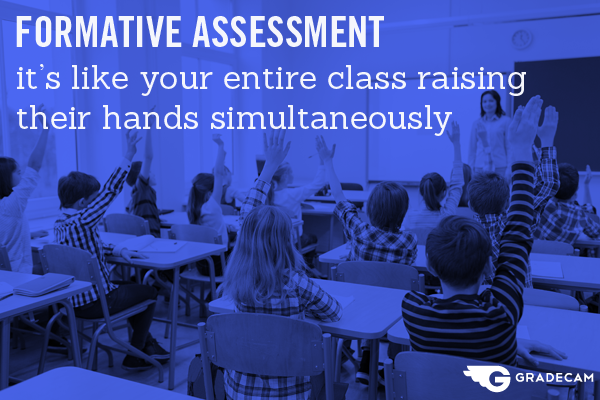How to Read Your Students’ Minds


A teacher asking a classroom “Are there any questions?” is usually followed by the proverbial sound of crickets. The teacher is left wondering what the students’ brains absorbed and what flew over their heads. The secret sauce to teaching success may very well be in using tools like GradeCam to assess what exactly each student understood from that lesson and how to adjust your teaching moving forward.

Data-driven instruction, as this teaching method is often called, gets everyone involved in making sure students are learning and improving throughout the year. The system thrives on a three-pronged approach where teachers collect data (assessment), scrutinize the results (analyze) and then adjust their teaching accordingly (action).
Why is data-driven instruction so important? Student data has the power to tell you exactly what each of your students know and don’t know on a day-to-day basis.
When one student raises his or her hand, you gain insight and understanding into only what that specific students knows. By using data-driven and formative assessment instruction techniques, it’s like your entire class has suddenly raised their hands simultaneously. You can now see into each student’s brain and use that information to determine your next move as an educator.

And GradeCam provides a direct line to this teaching superpower.
It works like this:
You work your formative assessment magic by asking your students a short series of questions before, during, or after each lesson, and capture their responses with GradeCam.
- Data is instantly recorded and compiled when you or your students scan in their answer forms.
- You check your reports.
- You now have complete control of what you choose to do next, whether it’s:
- Reteaching a section of the day’s lesson (if the majority of students missed a certain question)
- Choosing to advance to the next reading level (if everyone responded correctly)
- Forming intervention groups (if student responses were incorrect or mixed)
Some call this data-driven instruction. Your students think it’s Jedi mind control. Either way, they end up learning more and you come out the hero.




